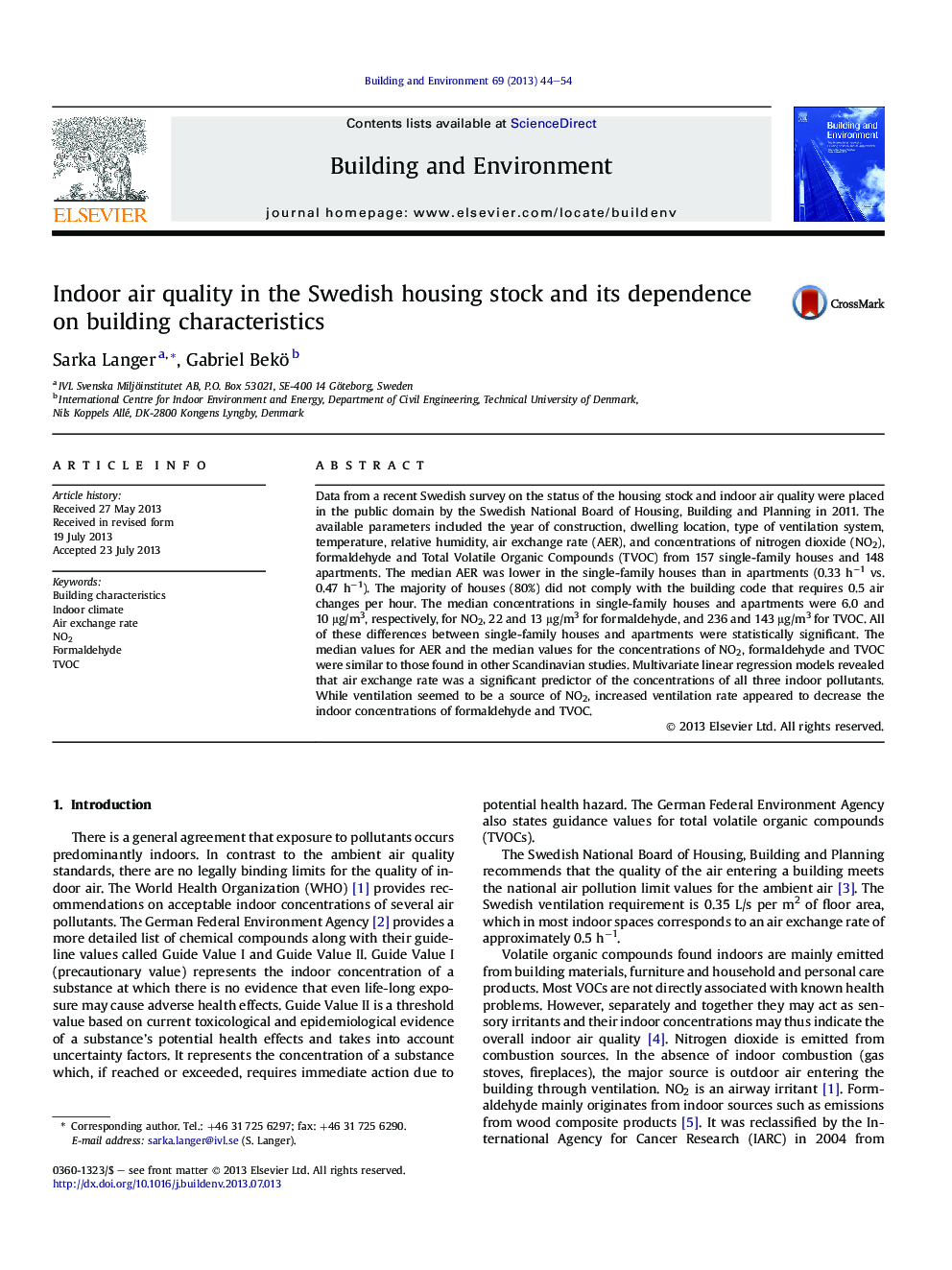| کد مقاله | کد نشریه | سال انتشار | مقاله انگلیسی | نسخه تمام متن |
|---|---|---|---|---|
| 248284 | 502558 | 2013 | 11 صفحه PDF | دانلود رایگان |

• A 2007 survey on indoor environmental quality in the Swedish housing stock was re-evaluated.
• Eighty percent of the dwellings surveyed did not meet the ventilation requirements of the Swedish building code.
• The median air exchange rate was lower in single-family houses compared to apartments (0.33 vs. 0.47 h−1).
• Concentrations of NO2 were lower, concentrations of HCHO and TVOC were higher in single-family houses than in apartments.
• Concentrations of air pollutants were similar to those reported in other Scandinavian studies.
Data from a recent Swedish survey on the status of the housing stock and indoor air quality were placed in the public domain by the Swedish National Board of Housing, Building and Planning in 2011. The available parameters included the year of construction, dwelling location, type of ventilation system, temperature, relative humidity, air exchange rate (AER), and concentrations of nitrogen dioxide (NO2), formaldehyde and Total Volatile Organic Compounds (TVOC) from 157 single-family houses and 148 apartments. The median AER was lower in the single-family houses than in apartments (0.33 h−1 vs. 0.47 h−1). The majority of houses (80%) did not comply with the building code that requires 0.5 air changes per hour. The median concentrations in single-family houses and apartments were 6.0 and 10 μg/m3, respectively, for NO2, 22 and 13 μg/m3 for formaldehyde, and 236 and 143 μg/m3 for TVOC. All of these differences between single-family houses and apartments were statistically significant. The median values for AER and the median values for the concentrations of NO2, formaldehyde and TVOC were similar to those found in other Scandinavian studies. Multivariate linear regression models revealed that air exchange rate was a significant predictor of the concentrations of all three indoor pollutants. While ventilation seemed to be a source of NO2, increased ventilation rate appeared to decrease the indoor concentrations of formaldehyde and TVOC.
Journal: Building and Environment - Volume 69, November 2013, Pages 44–54